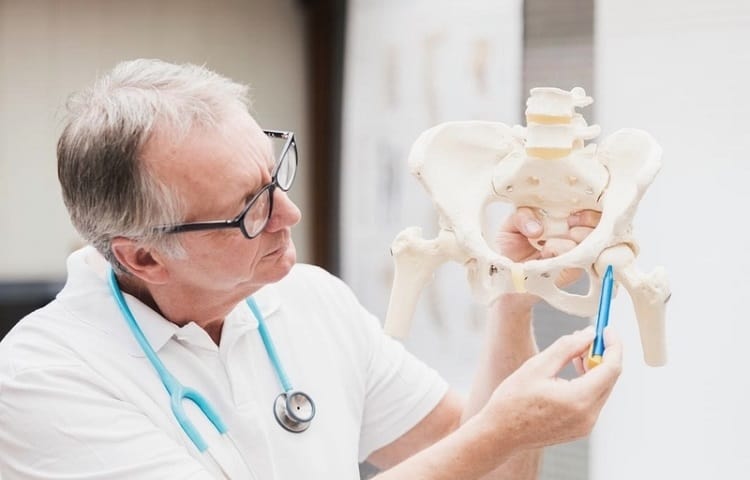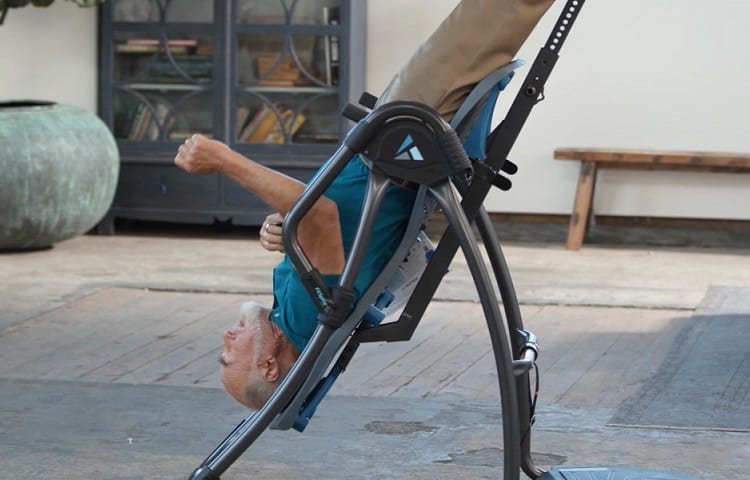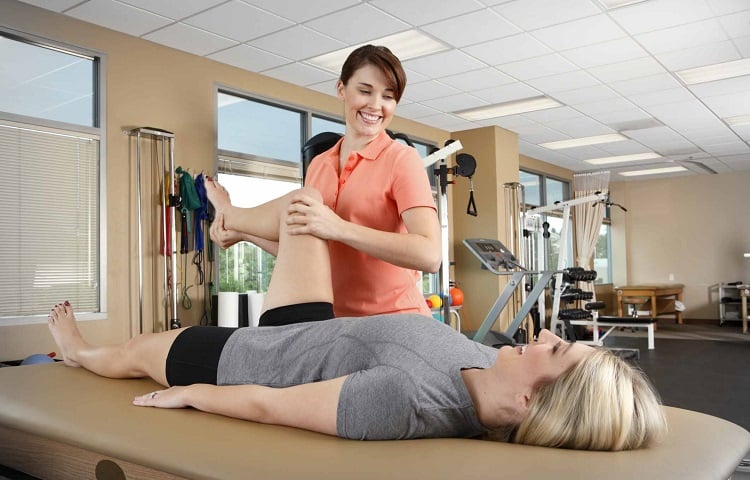 Hip replacements can keep you out of commission for a long time.
Hip replacements can keep you out of commission for a long time.
You spend a lot of time in bed with minimal exercise.
As a result, engaging your muscles and hip flexors becomes quite difficult, once you’re ready to get up and move around again.
You have to build up and maintain your muscles all over again. A quality inversion table can help speed up your recovery.
Inversion therapy can help enhance circulation in the targeted area, and maintain muscle flexibility. That can make regaining muscle and mobility easier.
But inversion tables have risks as well.
Keep reading to learn everything you need to know about inversion therapy after hip replacement surgery.
Table of Contents
Inversion Table After Hip Replacement
Your hip replacement is done, and you’re in the recovery process.
Depending on the severity of your issues and depth of the surgery, you may be out of commission for one to two weeks.
Full recovery can still take up to twelve weeks. That’s a long time before you feel completely like yourself again.

You’ve probably already heard or read about inversion therapy and its benefits for recovering hip surgery patients. We’ll get into that below. For now, we’ll just say to take inversion therapy with a grain of salt.
It can help prevent compression in your hip for sure, but it can also cause damage if you aren’t careful, undoing all the hard work that went into your surgery.
The timing for when you start inversion therapy is vital.
Wait until you have hit a point of recovery where you have full mobility with no hindrances, when the incision has closed up and you’re not encountering those mid-morning hip aches. At this point, you may be ready for inversion therapy (with advice from your doctor).
We should note that we did not fully take SUPERPATH™ hip replacement into account when writing this article, since it is a new procedure that has not bee in use for nearly as much time as traditional hip replacement.
We may revise this article at a later date when more information about SUPERPATH™ hip replacement is available and more patients have undergone this procedure.
Is An Inversion Table Recommended?

Recommended? That’s questionable, because it varies from doctor to doctor.
Some patients have foregone the recommendations of waiting until ten to twelve weeks before starting inversion therapy post-surgery, and those patients have reported faster healing and less bedrest by using inversion therapy.
But is it safe?
Most of the time, the answer is simply: no. Inversion therapy comes with its risks, but chief among them is using your arms and torso weight to pull down on your hip flexors while hanging upside-down.
That’s a lot of tension. Granted, your upper body is already putting gravitational pressure on your hip when you walk around, but our bodies are somewhat designed to handle that effectively.
When that weight is free-hanging with no support to lean on (like the floor/ground), it feels much more intense and pulls on your muscles/bones.
This can cause problems, so talk with your doctor and surgeon to decide if an inversion table is a smart move for you or not. Depending on the depth of your replacement, it may be helpful, or it might be utterly forbidden.
Other Forms Of Therapy

If inversion therapy isn’t on the table (pun intended), don’t fret: there are alternatives that can help with varying degrees of success.
Straight Leg Raises
This is as simple as it sounds. You raise a leg slowly and gently from a prone position, until it is completely extended up in the air. Then you repeat with the other leg.
This helps work your hip flexors briefly, while also maintaining or regaining muscle strength in your legs to support your hips when you begin walking again.
Quadriceps Set
These require you to sit on the floor, and tighten the muscle on top of your thighs. This can be extremely low-impact with varying levels of difficulty and muscle engagement depending on the patients’ needs. This means you can modify it to your liking or specifications.
Contract your muscles, hold for 5 to 15 seconds (depending on your level of training), and release. Then repeat. Your quadriceps play a key role in your balance and ability to walk, so be sure to take the time to strengthen them.
Ankle Rotations
To properly perform an ankle rotation, you stand tall and raise your foot off the floor. Aim for between one to two feet in the air.
Hold your toes upwards to engage your ankle, and then rotate your feet in a circular motion. Hold your foot to the right for about eight to ten seconds, then to the left, and then release.
Step down, and do this on the other ankle as well. The goal is to do this at least ten times per ankle, but upwards of twenty-five as time goes on and you get stronger, to strengthen your ankles to the best of your ability.
Ankle Pumps
Working your ankles helps exercise more than just the muscles directly surrounding your ankle. You’ll feel a burning going up your calves and shins, too. And that’s a good thing.
Ankle pumps are the epitome of this. Straighten your toes so that they go straight up while you’re lying down. Move with your ankles.
Pull those toes up toward your shins as close as you can, then extend your feet in the opposite direction as much as possible. Breath while doing this exercise, since it pumps blood from your calves to your heart, and you need all the oxygen you can get.
Inversion Table After Hip Replacement: Final Thoughts
Do not attempt using an inversion table until you’ve made a 100% full recovery. Not 90%. If you absolutely must hang upside down, do so without using an inversion table.
Take the time that your body needs to rest and adjust to the new hip. Trust us, your body will thank you for it.
If you’re still healing, you’re not going to rebuild muscle and flexibility like you want. Use inversion tables wisely, but do use them (if recommended by your doctor, of course): they can help maintain your muscles while you make your gains again.
Note: This article was not written by a chiropractor or physician. While we heavily research our articles and do our best to provide solutions, we ask you to never attempt anything to do with spinal decompression, inversion, or pain management without first seeking the advice of your primary healthcare provider.
Leave a Reply